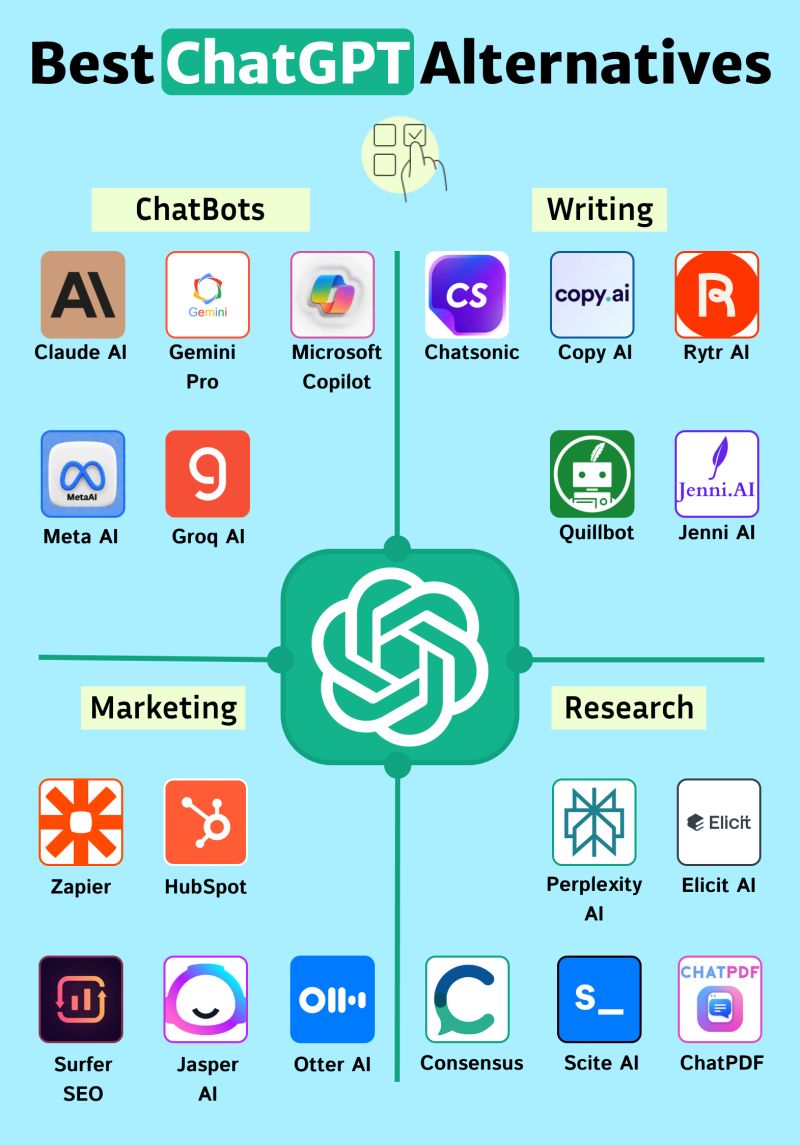As the publishing industry continues to evolve, staying ahead of emerging trends and technologies is essential for authors and publishers to remain competitive and innovative.
This comprehensive guide delves into the key trends shaping the future of publishing, from AI-driven content creation to interactive storytelling and personalized reading experiences, offering insights on how authors can adapt and thrive in the ever-changing publishing landscape.
AI-Driven Content Creation
Artificial intelligence (AI) is revolutionizing content creation in the publishing industry, offering new possibilities for you to speed up your writing process and engage with readers better. AI tools, such as large language models (LLMs) like Chat GPT, are reshaping how content is generated, personalized, and distributed. While AI is not yet ready to write best-selling novels independently, it is a powerful tool that can improve stories, increase audience engagement, and streamline operations such as content classification, acquisitions, and book marketing.
Benefits of AI in Self-Publishing:
- Content Improvement: AI can assist in editing and refining manuscripts, ensuring consistency and reducing errors.
- Audience Engagement: AI-driven tools can analyze reader preferences and feedback to help authors create content that resonates with their audience.
- Marketing and Discoverability: AI can optimize keywords, generate personalized recommendations, and develop targeted marketing campaigns to enhance a book’s visibility and appeal
Different AI tools serve different purposes, from enhancing writing quality and detecting plagiarism to generating content and improving marketing strategies. Below is a summary of top AI tools for authors and writers.
| AI Tool | Uses |
|---|---|
| Grammarly | Checks for grammar, spelling, and punctuation errors in writing. |
| Pro-Writing Aid | Provides comprehensive writing feedback, including grammar, style, and readability checks. |
| Scribbr Plagiarism | Detects and highlights potential instances of plagiarism in written content. |
| ChatGPT | Generates content for social media, email, advertising, and video scripts. |
| Copy.ai | Offers various AI-powered writing generators for social media, email, product descriptions, and more. |
| Book Blaster | Utilizes AI for book marketing, providing authors with tools to enhance their promotional efforts. |
By leveraging AI for automated reprint decisions, audience targeting, and personalized marketing strategies, authors can optimize their book’s discoverability and appeal to a diverse readership.
Interactive Storytelling and Personalized Reading Experiences
Interactive storytelling and personalized reading experiences are redefining how readers engage with content, offering immersive and tailored experiences that cater to individual preferences and interests. Augmented reality (AR) and virtual reality (VR) technologies are blurring the lines between the real and virtual worlds, allowing readers to explore interactive narratives and 3D models that enhance their reading experience.
Innovations in Interactive Storytelling:
- Augmented Reality (AR): AR technology can overlay digital content onto the physical world, providing readers with an interactive and immersive experience. For example, AR can be used to bring illustrations in children’s books to life or to provide historical context in educational texts.
- Virtual Reality (VR): VR offers a fully immersive experience, transporting readers into the world of the story. This technology is particularly effective for genres like fantasy and science fiction, where readers can explore fictional worlds in depth.
- Personalized Content Curation: AI-powered tools can analyze reader behavior and preferences to deliver tailored recommendations and customized reading experiences. Subscription-based models can offer readers a personalized library of content that evolves with their tastes and interests.
Publishers are leveraging AR/VR to create engaging content, from virtual travel experiences to educational simulations, providing readers with a new level of immersion and interactivity. Personalized content curation powered by AI enables publishers to deliver tailored recommendations, subscription-based models, and customized reading experiences that resonate with readers and foster deeper engagement with books.
The Rise of Audiobooks
Audiobooks have become increasingly popular, particularly among younger generations like Gen Z, who prefer the convenience and multitasking potential of audio content. Studies show that 48% of Millennials and Gen Z book lovers choose audiobooks, compared to only 24% of Gen X and Baby Boomers.
Factors Driving Audiobook Popularity:
- Multitasking: Audiobooks allow listeners to enjoy books while performing other activities, such as commuting, exercising, or doing household chores.
- On-Demand Accessibility: The digital nature of audiobooks aligns with Gen Z’s tech-savvy preferences, allowing them to download and access content anytime, anywhere on smartphones and other devices.
- Cost-Effectiveness: Audiobooks provide a convenient and often more affordable alternative to purchasing physical books, appealing to budget-conscious consumers.
Despite the growing popularity of audiobooks, print books and ebooks remain the most widely consumed formats among all generations. However, the rise of audiobooks offers a new way for Gen Zers and others to enjoy books, complementing traditional reading formats rather than replacing them.
Hybrid Publishing Models
Hybrid publishing models, blending elements of traditional and self-publishing, are gaining traction among authors seeking a middle ground between creative control and professional support. By leveraging hybrid publishing services, authors can access editorial guidance, design expertise, and distribution networks while retaining ownership and creative autonomy over their work.
Advantages of Hybrid Publishing:
- Professional Support: Authors benefit from the expertise of experienced editors, designers, and marketers, ensuring their book meets high standards of quality and professionalism.
- Creative Control: Unlike traditional publishing, hybrid models allow authors to retain control over their content, cover design, and marketing strategies.
- Increased Reach: Hybrid publishers often have established distribution networks, enabling authors to reach a broader audience through multiple channels, including online retailers, bookstores, and direct-to-consumer platforms.
Embracing hybrid models allows authors to benefit from the best of both worlds, combining the flexibility of self-publishing with the industry expertise of traditional publishing to enhance their book’s quality and market reach.
Leveraging Data Analytics and AI Tools
In an era driven by data and technology, authors can harness the power of data analytics and artificial intelligence (AI) tools to optimize their publishing strategies and enhance reader engagement. By analyzing reader preferences, market trends, and sales data, authors can tailor their content, marketing campaigns, and pricing strategies to resonate with their target audience effectively.
Applications of Data Analytics and AI in Self-Publishing
- Reader Insights: Analyze reader feedback and behavior to understand what resonates with your audience and refine your content accordingly.
- Market Trends: Monitor market trends to identify emerging genres and topics, allowing you to stay ahead of the curve and meet reader demand.
- Personalized Marketing: Use AI tools to create personalized marketing campaigns that target specific reader segments, increasing the likelihood of engagement and sales.
AI tools can assist authors in generating personalized recommendations, optimizing keywords for discoverability, and even aiding in content creation, empowering writers to make informed decisions and maximize their book’s visibility and impact in a competitive digital landscape.
Nurturing Community Engagement and Building Author Brands
Community engagement and author branding are becoming increasingly essential for authors to establish a loyal readership and differentiate themselves in a crowded market. By cultivating relationships with readers through social media, author events, and online platforms, authors can foster a dedicated fan base, generate word-of-mouth buzz, and create a strong author brand to write books that go viral.
Strategies for Building a Strong Author Brand:
- Social Media Presence: Utilize platforms like Facebook, Instagram, Twitter, and TikTok to connect with readers, share updates, and promote your work.
- Author Events: Participate in or host book signings, readings, and virtual events to engage with readers in person and online.
- Online Community: Build an online community through forums, book clubs, and your author website, where readers can interact with you and each other.
Building a robust online presence, engaging with readers authentically, and showcasing your unique voice and storytelling style can help authors stand out, connect with their readers on a deeper level, and cultivate a lasting impact in the self-publishing landscape.
Prioritizing Quality and Professionalism
In a competitive self-publishing landscape, quality and professionalism remain paramount for authors aiming to establish credibility, build reader trust, and elevate their brand reputation. Investing in professional editing, cover design, and formatting services is essential to ensure a polished and professional final product that resonates with readers and stands out in a crowded market.
Key Areas to Invest In:
- Editing: Professional editing ensures a polished manuscript, free of grammatical errors and inconsistencies.
- Cover Design: An eye-catching cover design attracts readers and conveys the essence of your book.
- Formatting: Proper formatting ensures a smooth and enjoyable reading experience, whether in print or digital format.
By prioritizing quality at every stage of the publishing process, from manuscript refinement to marketing and distribution, authors can position themselves as serious contenders in the self-publishing arena and set the foundation for long-term success and recognition as influential writers of tomorrow.
Conclusion
The future of publishing is marked by technological innovation, interactive storytelling, and personalized reading experiences that are reshaping how authors create and how readers consume content.
By embracing AI-driven content creation, interactive storytelling tools, and customized reading experiences, authors can adapt to the evolving publishing landscape, connect with their audience in meaningful ways, and position themselves as innovative leaders in the industry. Staying informed, embracing new technologies, and prioritizing reader engagement is key to thriving in the competitive and dynamic world of publishing in 2024 and beyond.



